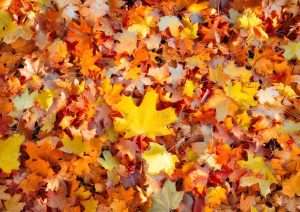
As the crisp autumn air settles in and winter approaches, it’s important to prepare your yard to withstand the colder months. Proper preparation can help protect your plants, soil, and garden equipment, ensuring that your outdoor space remains healthy and vibrant. Here’s a comprehensive guide to getting your yard ready for fall and winter.
Inspect and Clean Up Your Yard
Remove Fallen Leaves and Debris
Fallen leaves and debris can create a mat on your lawn that blocks sunlight and traps moisture. This can lead to mold and rot. Use a leaf blower or rake to clear your yard regularly. Here is additional information about beneficial ways to use those fallen leaves.
Clean and Store Garden Tools
Before winter sets in, clean and store your garden tools to extend their lifespan. Remove dirt and rust, sharpen blades, and oil moving parts. For a detailed tool maintenance guide, visit Better Homes & Gardens.
Prepare Your Soil
Mulch Your Beds
Adding a layer of mulch to your garden beds helps insulate the soil and protect plant roots from extreme temperatures. It also reduces weed growth and erosion. Learn more about mulching from Gardenista’s Mulching Tips.
Test and Amend Soil
Testing your soil’s pH and nutrient levels can help you understand what amendments it needs before winter. Adding compost or organic matter can improve soil structure and fertility. For a guide on soil testing and amendments, check The Old Farmer’s Almanac.
Protect Your Plants
Wrap and Protect Trees and Shrubs
Young or tender trees and shrubs benefit from wrapping with burlap or applying tree wrap to protect against frost and sunscald. This also helps prevent damage from wind and ice. For detailed instructions on protecting your plants, see The National Gardening Association.
Prune Dead and Diseased Branches
Pruning dead or diseased branches before winter helps prevent the spread of disease and promotes healthy growth in the spring. However, avoid heavy pruning during late fall as it can stimulate new growth that may not harden off before winter. Fine Gardening offers useful pruning tips. Also, check out All Green’s recommendations for fall pruning.
Winterize Your Lawn
Aerate and Seed Your Lawn
Aerating your lawn before winter helps reduce compaction and allows water and nutrients to reach the roots more effectively. Over-seeding with cool-season grasses can also help ensure a lush lawn come spring. For more information on lawn aeration and seeding, check Lawn Starter’s Guide.
Adjust Mowing Height
Before the final mow of the season, set your mower to a lower height. Shorter grass helps reduce the risk of disease and allows sunlight to reach the soil more effectively. For more on mowing tips, visit The Lawn Care Nut.
Winterize Your Irrigation System
Drain and Disconnect Hoses
Water left in hoses and irrigation systems can freeze and cause damage. Be sure to drain all hoses, disconnect them, and store them in a dry place. For guidance on winterizing irrigation systems, see The Home Depot’s Tips.
Insulate Pipes
If you have exposed irrigation pipes, wrap them with insulation to prevent freezing and bursting. This Old House provides step-by-step instructions on insulating pipes.
Conclusion
Preparing your yard for fall and winter is an essential part of maintaining a healthy and beautiful outdoor space. By following these steps, you’ll help ensure that your garden emerges strong and vibrant in the spring. For more detailed advice and seasonal tips, refer to the resources linked throughout this guide. Check out our additional fall and winter preparation tips
